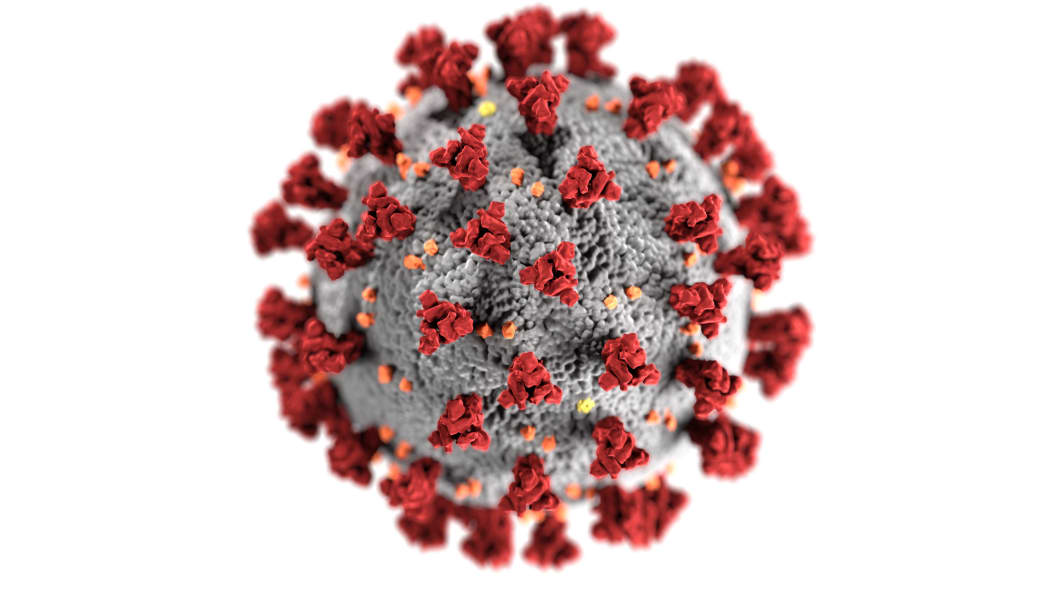Professor Kurt Krause, from the University of Otago, introduces us to viruses – what they are, how they invade our cells, what a coronavirus is and how repurposed drugs are being tested to see if they can be any use against the COVID-19 virus.

This illustration, created at the Centers for Disease Control and Prevention (CDC), reveals ultrastructural morphology exhibited by coronaviruses. Note the spikes that adorn the outer surface of the virus, which impart the look of a corona surrounding the virion, when viewed electron microscopically. A novel coronavirus, named Severe Acute Respiratory Syndrome coronavirus 2 (SARS-CoV-2), was identified as the cause of an outbreak of respiratory illness first detected in Wuhan, China in 2019. The illness caused by this virus has been named coronavirus disease 2019 (COVID-19). Photo: Alissa Eckert, MS, Dan Higgins, MAMS
Find Our Changing World on Apple Podcasts, Spotify, Stitcher, iHeartRADIO, Google Podcasts, RadioPublic or wherever you listen to your podcasts
Q&A with Professor Kurt Krause

Professor Kurt Krause, University of Otago. Photo: Alan Dove Photography
What is a virus?
“There are big debates about whether a virus is alive or whether it’s inanimate,” says Kurt. “But essentially it’s just a piece of either DNA or RNA that has this protein wrap.
“Viruses vary in terms of what kind of nucleic acid they have: DNA or RNA.
“They also vary in terms of whether they have a lipid envelope.
“They vary greatly in size and in the amount of DNA or RNA, as well.”
More than 5,000 species of virus have been scientifically described since their discovery in 1892, but evidence suggests there are many more undescribed species, which may number in the millions.
Different kinds of viruses
“The way they're classified is based on their nucleic acid composition. There's the double-stranded DNA family, there's the single-stranded DNA family, double- and single-stranded RNA families. So lots of technical details like that.
“They are also [classified according to] the number and type of proteins that make up the shell that contains the nucleic acid.
“They're all designed to survive very well indeed.
“[Airborne viruses] can float freely. And when they encounter mucosal surfaces like your throat or your eye or the inside of your nose, then they can be taken up.
“Other viruses can be taken up through the bloodstream.”
How and why a virus infects a cell.
“The spike protein [on the outside of a coronavirus] binds to a receptor on the surface of human cells and facilitates the uptake of the coronavirus during the infection process.
“[Viruses are] designed to unpack and then start replicating by taking over our own cells’ machinery.
“They sort of subvert our biochemical machines and start using those machines to make their own viral particles. And they'll make a tonne of viral particles which will swell the cell up and then burst the cell, and [these new particles] then go on and cause other infections.
“They're absolutely hijacking our cells and they do all kinds of fascinating tricks. Sometimes they will secrete fake human protein and they will convince our human cells to destroy their own proteins, which are actually protective.
“Really the war that goes on between us and viruses is a protein-protein war. We have our proteins and they have their proteins, and their proteins try to bind to our proteins. They try to break our proteins and they try to hijack our proteins.
“So we're in this protein-protein battle [against viruses] on a molecular level.
"They're insidious, and they do lots and lots of amazing things”
Listen to the podcast to hear more about coronaviruses and how some existing drugs developed to treat other illnesses might be able to be repurposed to treat COVID-19.
Our Changing World has been providing scientific context to the COVID-19 pandemic:
Virus 101 - the science of viruses.
Our immune system vs coronavirus – ‘I think of it as an orchestra’


